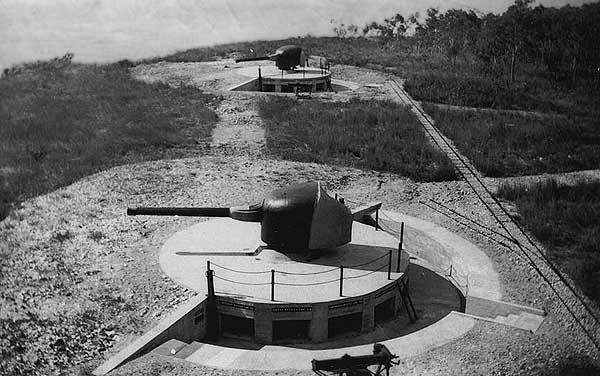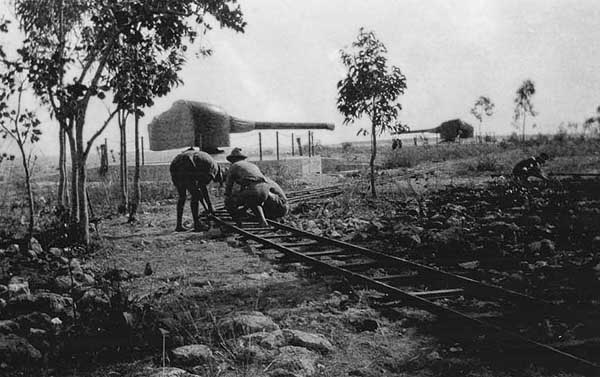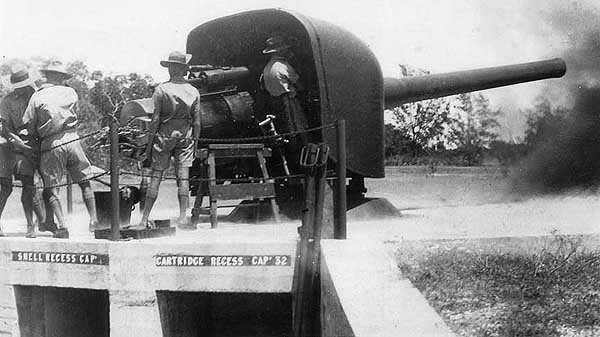FOR INTEREST: More on HMAS Brisbane’s Guns
The article ‘The Guns of HMAS Brisbane in Darwin’ in the September 2010 edition of the Journal remarked upon a difference in the right-hand and left-hand 6-inch gun emplacements at East Point and Emery Point. At both locations, the left-hand emplacements do not have a semi-circular concreted trench at the rear of the position, as does the right-hand emplacement. As noted in the article, it was not known whether this was the original condition of the emplacements.
Thanks to Brian Dudley, it is now known that this was not so. Photographs obtained by Brian show clearly that both emplacements were identical. They also confirm that the recesses in the trenches were for shells and cartridges.

The location of the guns shown in these new photographs is still not known, it is most likely that it was East Point, but it will be seen that two of the photographs show a narrow gauge tramway running at the rear of the gun positions. The soldiers in some of the photographs are wearing shoes and long socks and, from this, it is posited that they were members of the Permanent Military Force posted to Darwin in the between-wars years.

One photograph shows soldiers working on an un-ballasted tramway track and another shows the track ballasted and apparently a permanent feature of the battery’s infrastructure. Each gun at Emery Point and at East Point had a semi-underground magazine to its rear and there was also a Battery Magazine some distance back from the guns at East Point and it is possible that the tramway may have been for the conveyance of ammunition. The track comes in from the left rear of the left-hand emplacement and this precludes its running from the semi-underground magazines, unless it took a most circuitous route, but it may have come from the Battery Magazine. The photograph showing the ballasted tramway track also shows a path leading to each emplacement and these may be from the semi-underground magazines.

What other purpose could the tramway have served? It is probable that a tramway was installed because it would be in regular use, and the material/object to be conveyed was large, or heavy. It must be remembered that motor transport was not a notable feature of the pre-war AMF and it is possible that the tramway utilized four-wheeled trolleys, perhaps manually powered.
We are most grateful for Brian’s contribution to research on Darwin’s pre-war and wartime defence facilities and would welcome any further information, particularly if accompanied by photographs, from members or anyone else.